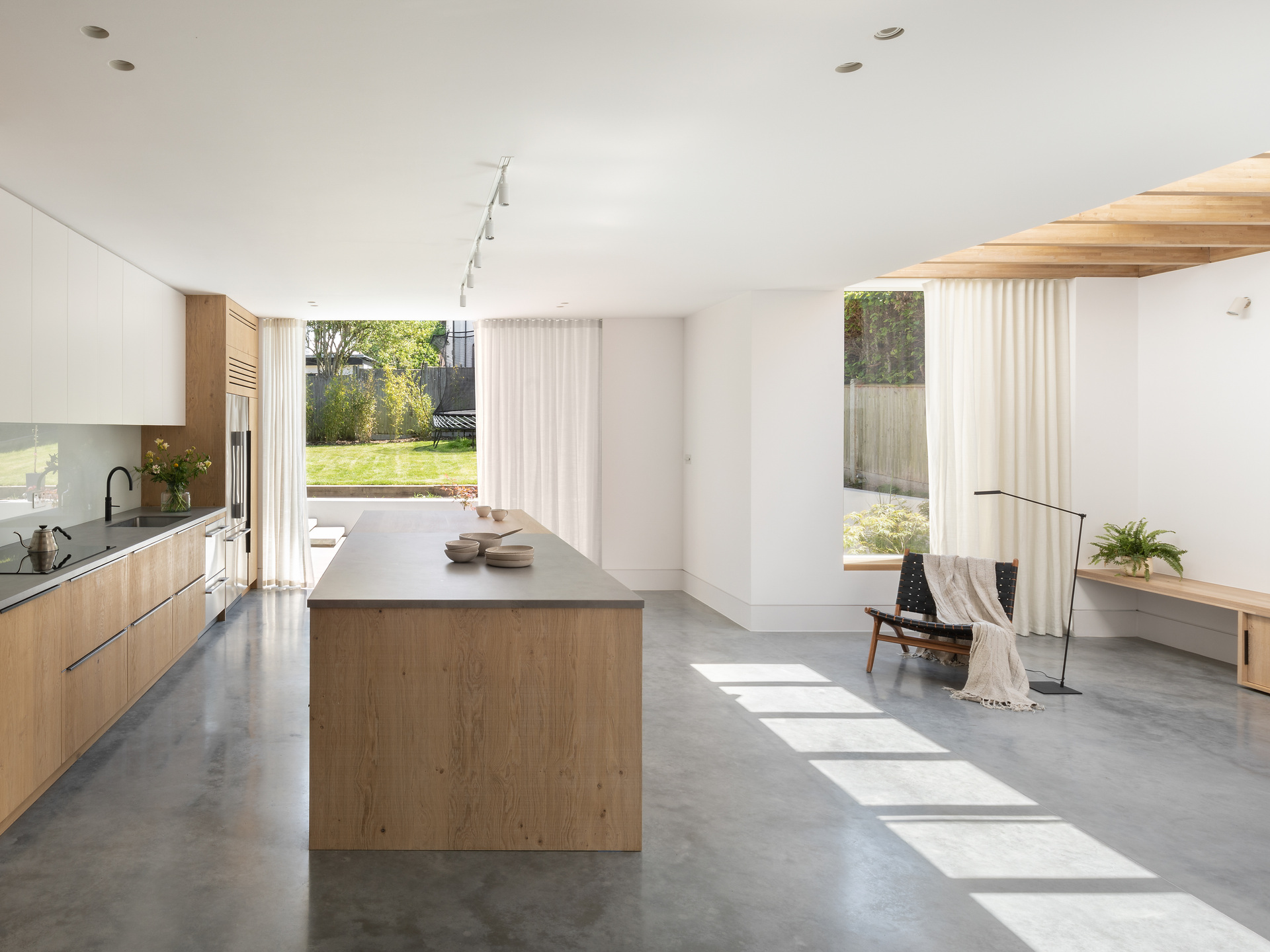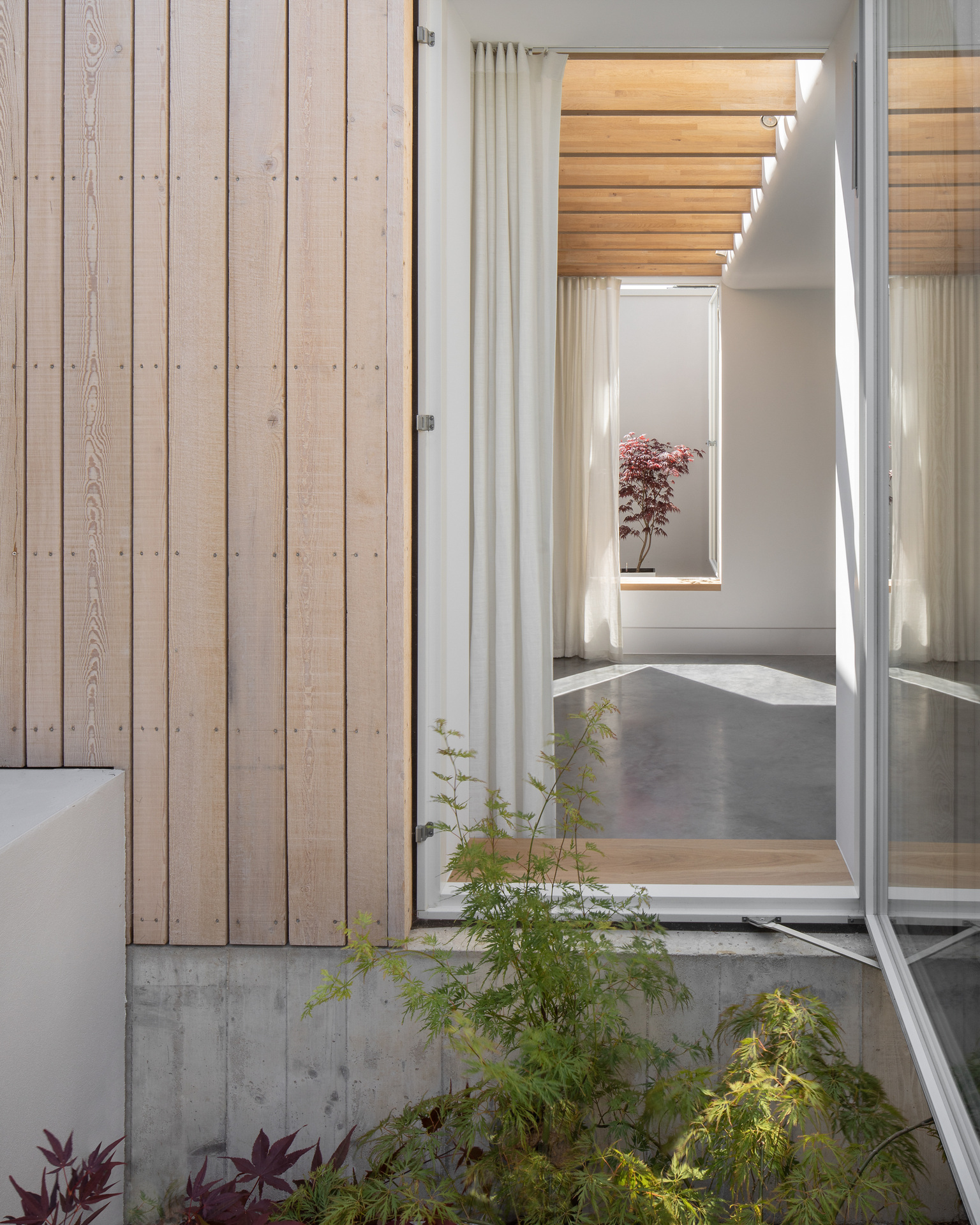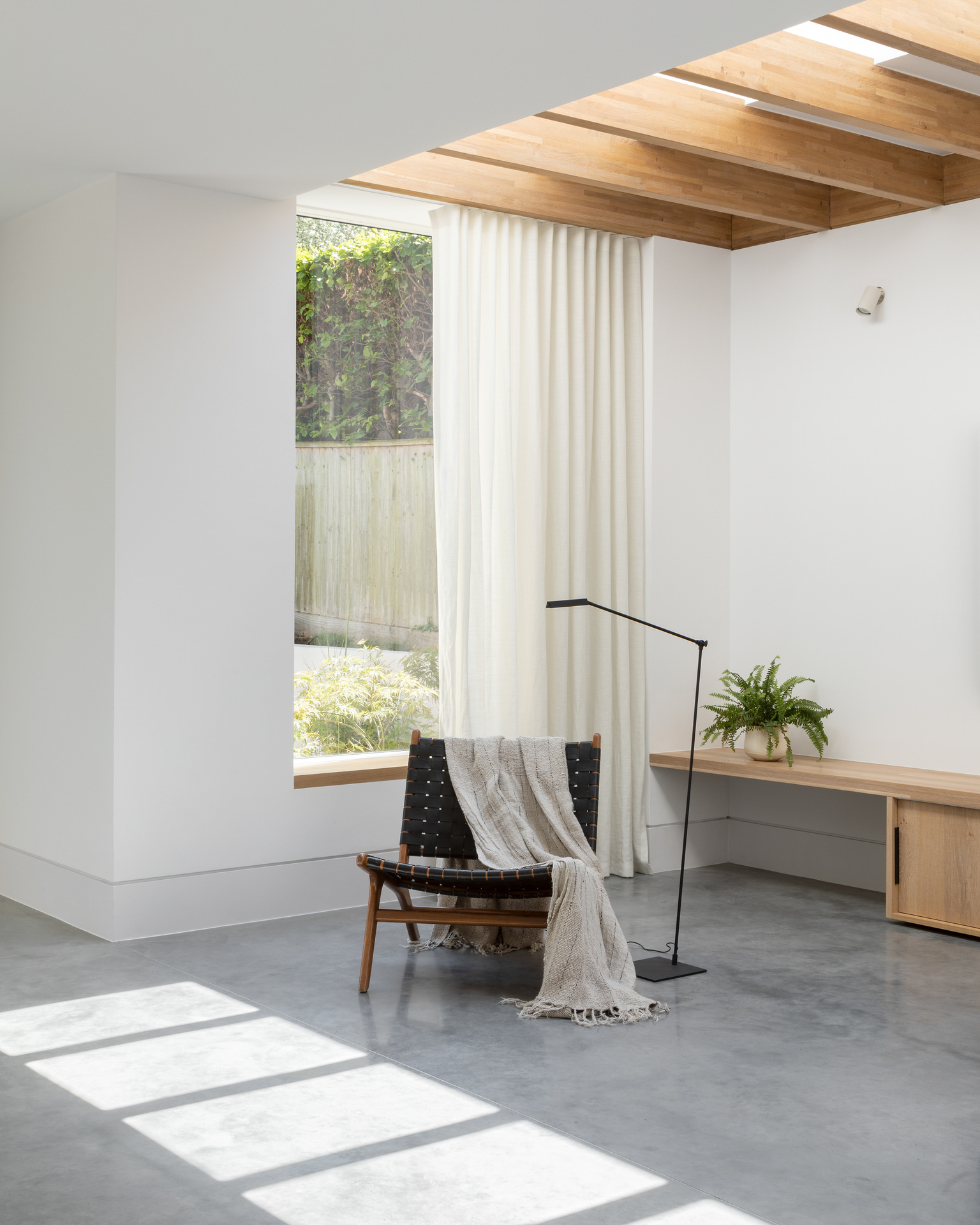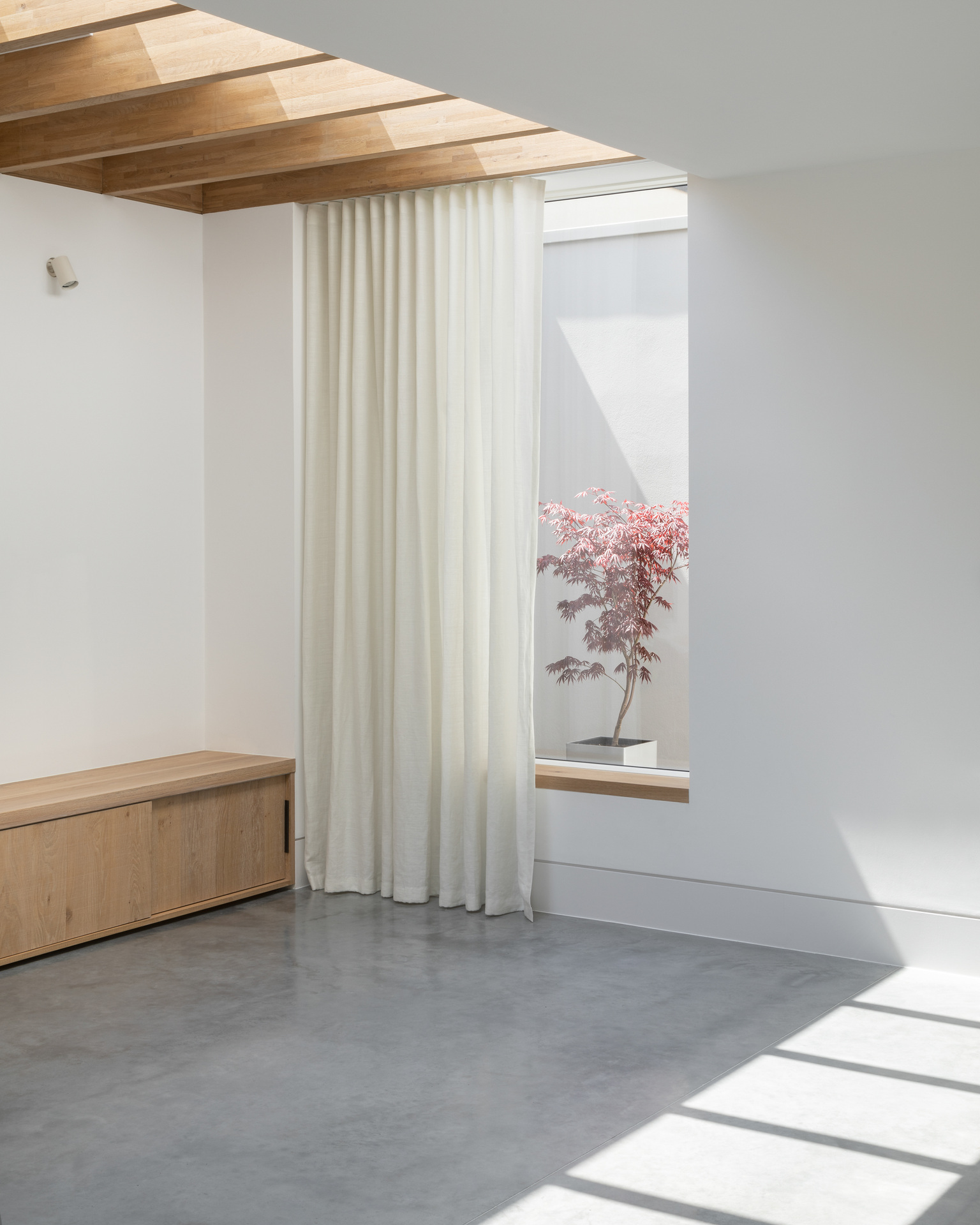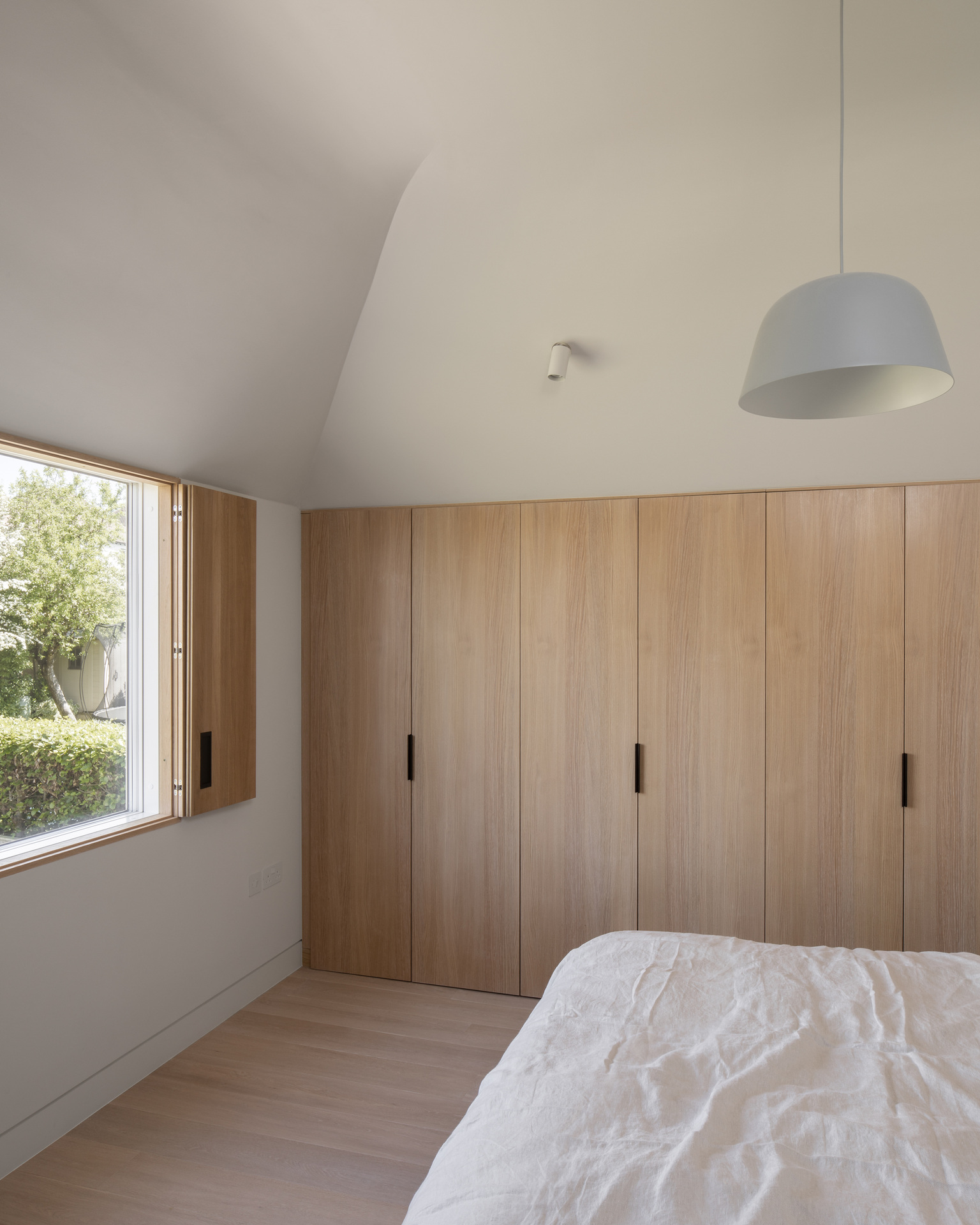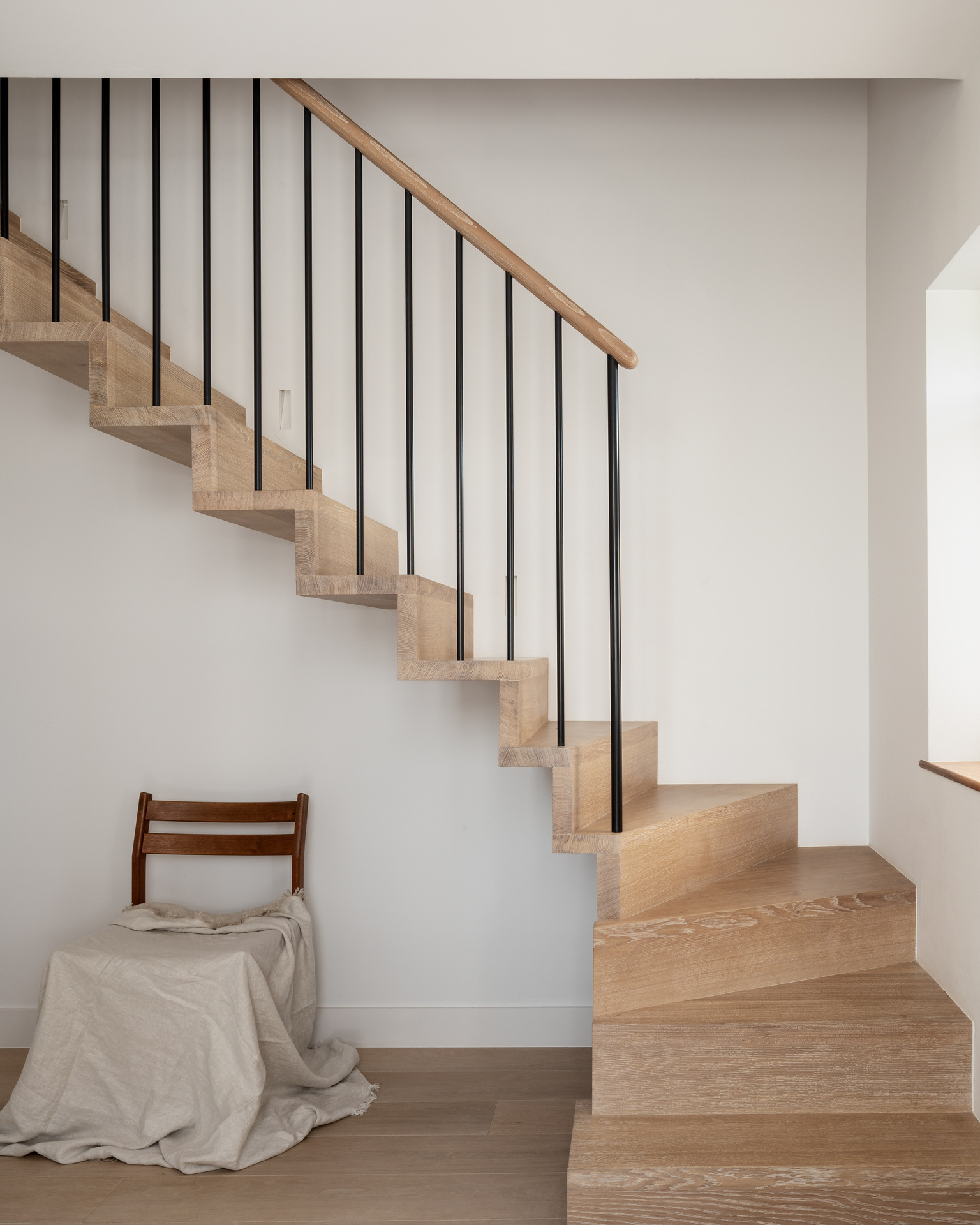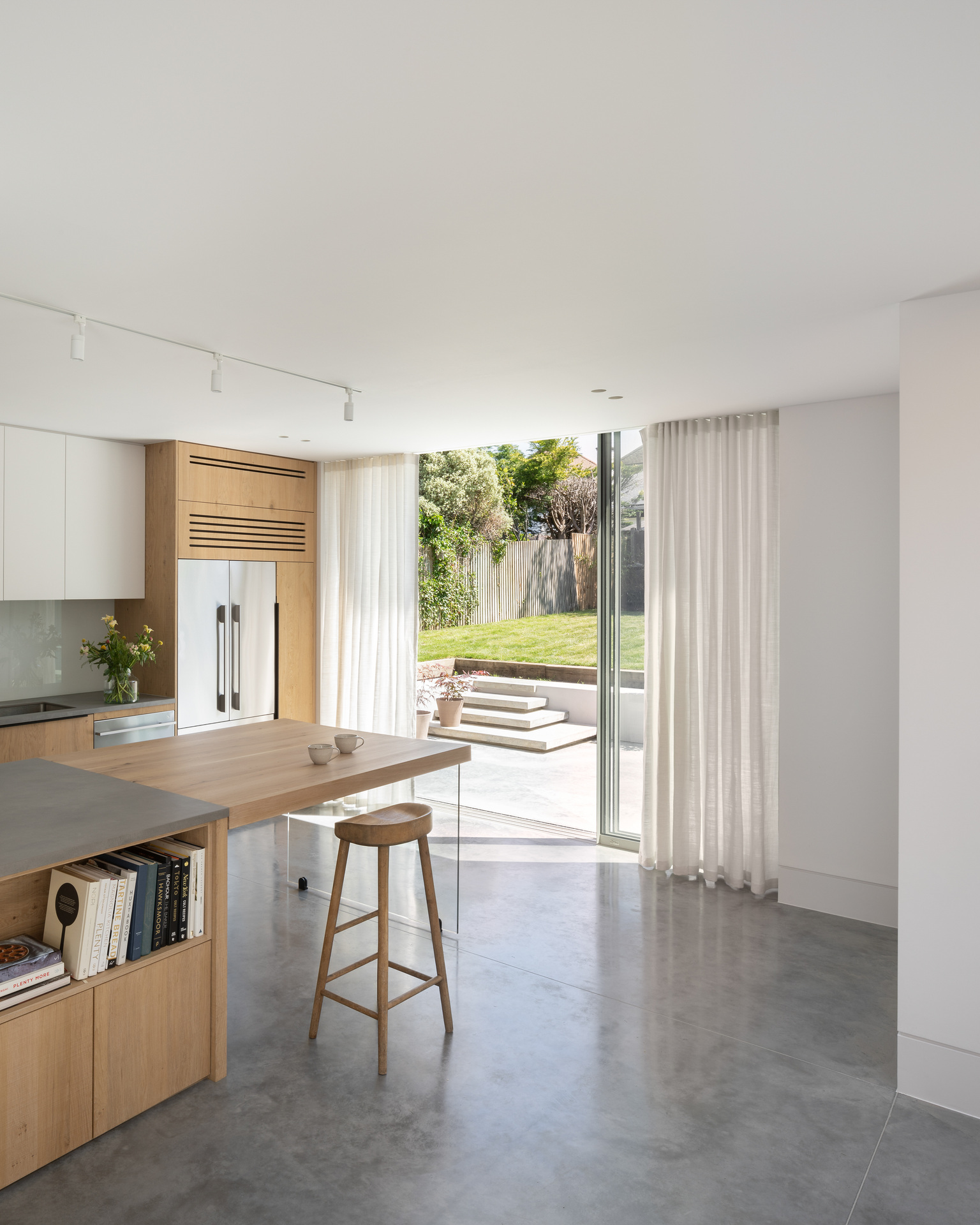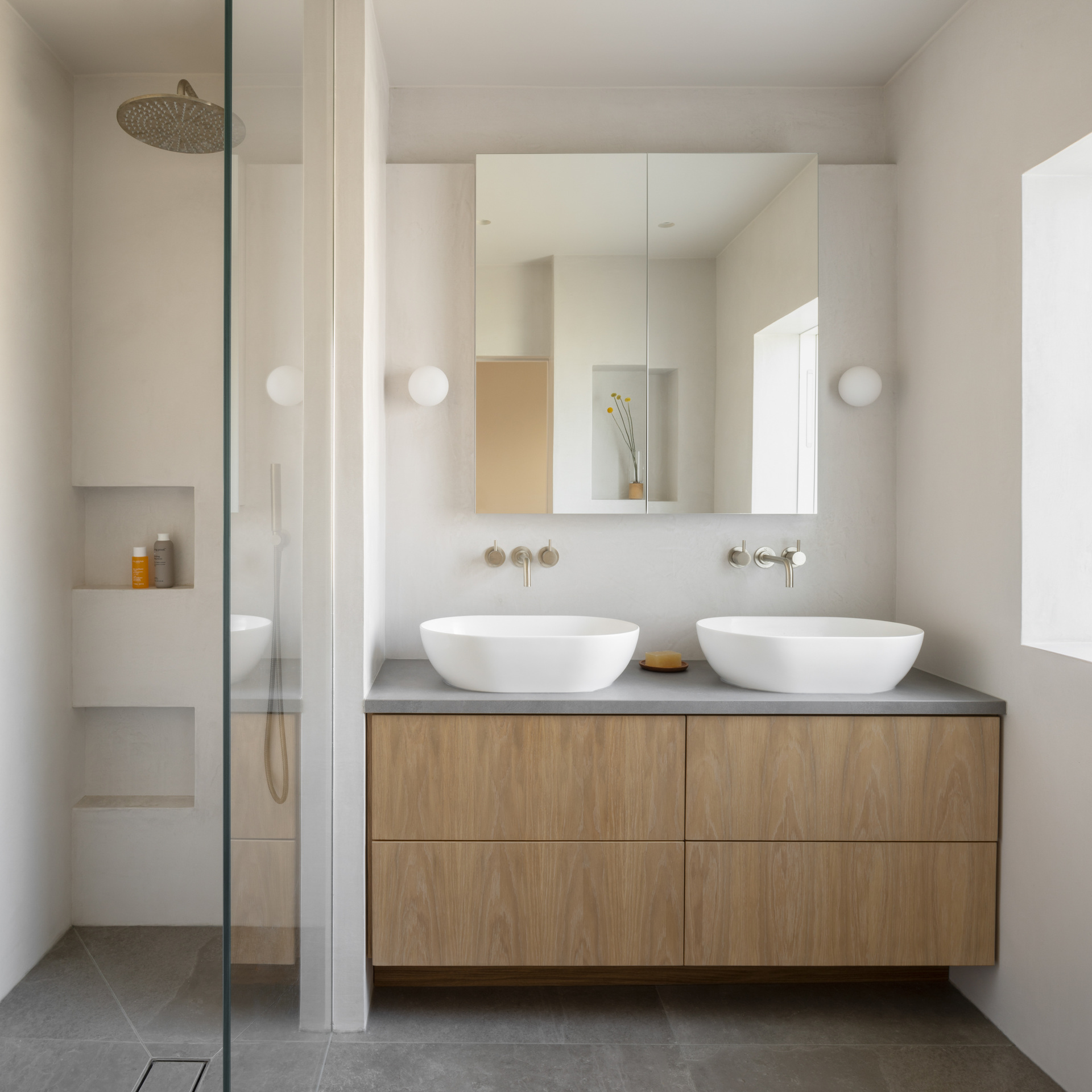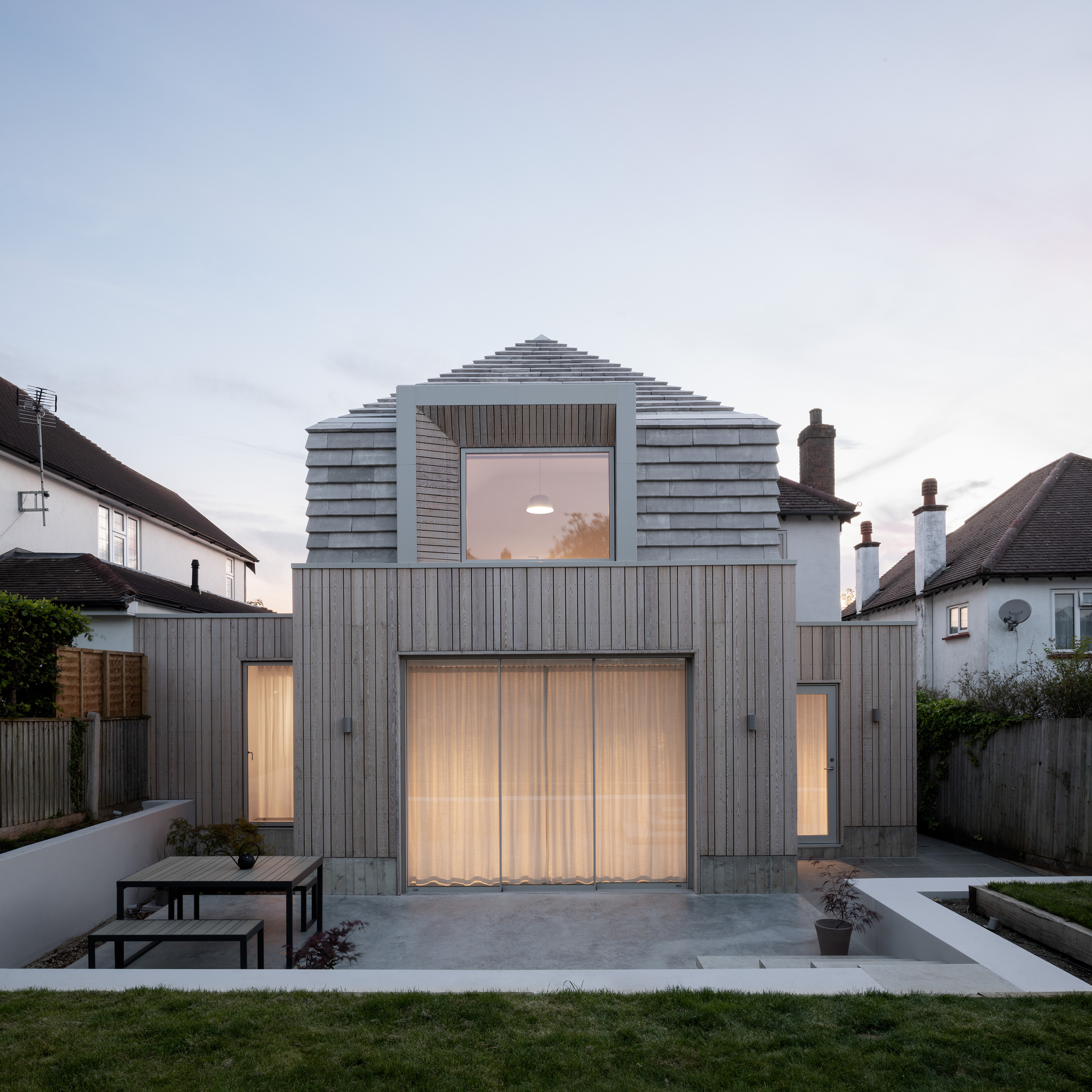Hipped House is a minimal residence located in Surrey, United Kingdom, designed by Oliver Leech Architects. The works included extensive interior renovations, and a new two-storey rear extension with a large dormer window that punctuates the roofline. The pitched, hipped-roof of the new extension was designed to replicate the form of the original house. Handmade Danish grey clay tiles have been paired with silvery Siberian larch cladding to create a muted palette of natural materials that create a clear, but sympathetic distinction between old and new.
The clients, a couple with two young children, briefed Oliver Leech Architects to redesign the house to be a more spacious and open home where the family could spend time together. The two-storey extension accommodates a new master bedroom on the first floor with vaulted ceilings and a view over the garden. On the ground floor, the house has been opened-up to create large flexible living and kitchen space.
The extension faces north, and the new plan incorporates two courtyards; one of which is internal to provide evening light deep into the home. A lone red acer tree sits on display in this light well, offering views to nature from throughout the house. The second courtyard faces the garden and is filled with soft planting that allows the family easy access to greenery from within.
Volumetrically the extension was defined by the existing house, with a hipped roof form that mimics the existing roof. Planning restrictions meant the material palette was limited to what was previously on site; clay tiles, timber and render. The design provided a contemporary twist on these restrictions, using a modern handmade grey clay tile that was visually very different to the red tiles more commonly found in the area. Various tiles in a wide range of colours from across Europe were tested on site to achieve the perfect harmony with the existing house. The clients and architect eventually settled on the warm grey clay colour which comes from earth pits in Eastern Europe, before they are transported to Denmark to be hand crafted into wide brick-format hung tiles.
Photography by Ståle Eriksen
